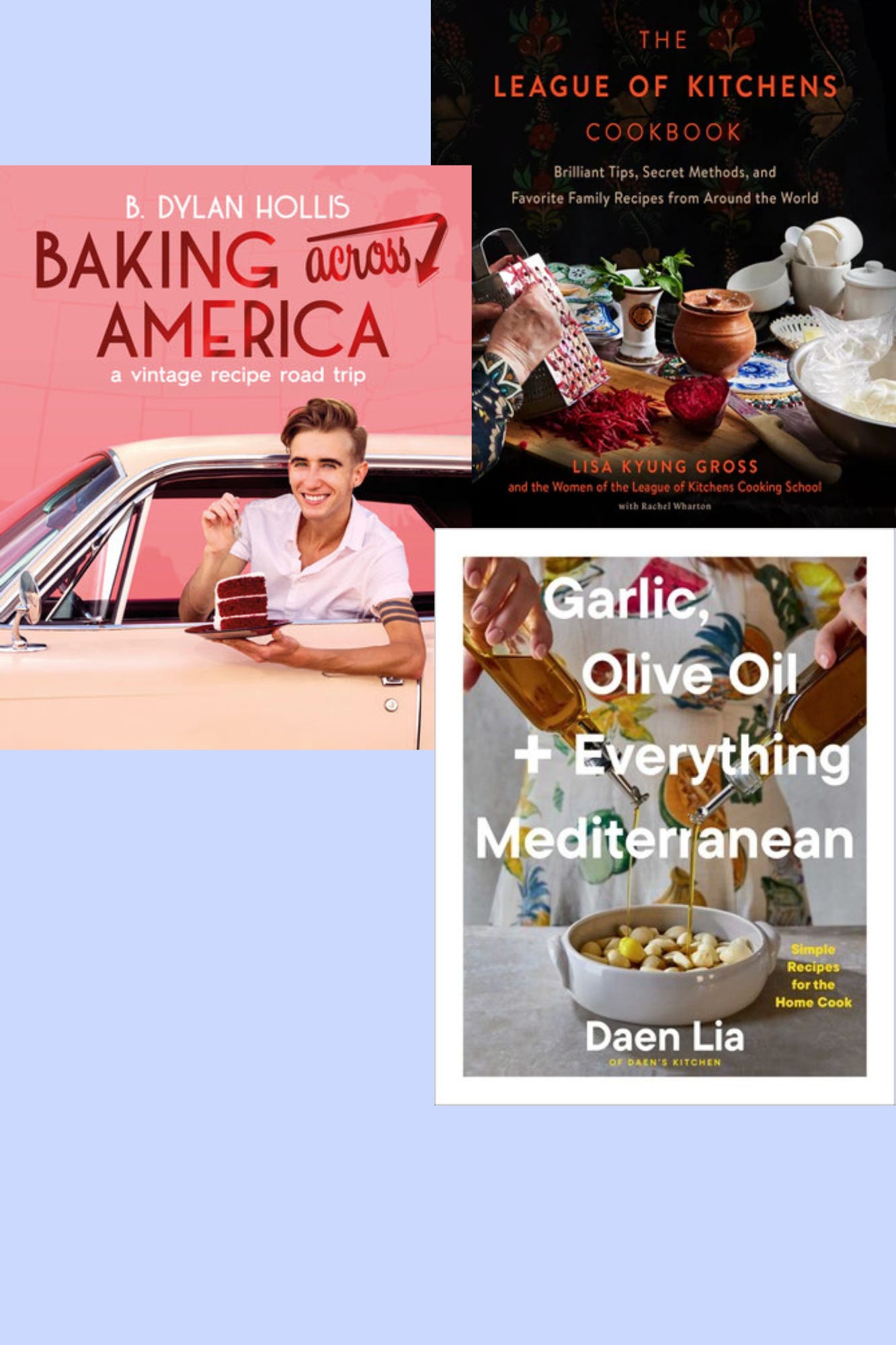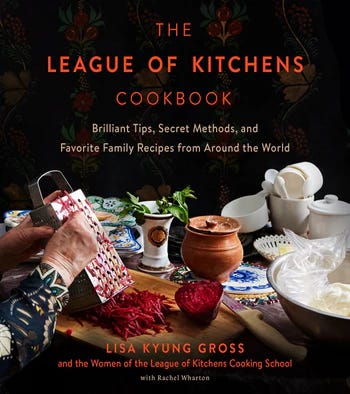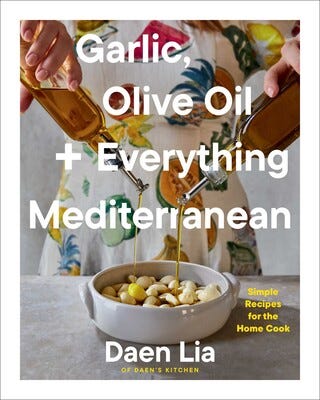*Baking Across America: A Vintage Recipe Road Trip, by B. Dylan Hollis
B. Dylan Hollis decided to map out a road trip across America using his collection of vintage community cookbooks as a guide; in this retro-themed, Betty Crocker-pink book, he follows that with the hook of baking and photographing half the recipes on location—peach cobbler in Georgia, pralines in New Orleans, Boston Cream Pie in Boston.
That starting point means the recipes here are standard regional specialties largely from the heyday of industrialized food in the 20th century—think hefty doses of shortening, Jello-O and instant pudding, Cool Whip, canned pie filling, imitation flavorings, and lots of sugar. Many, though, stay with more simple, less processed ingredients. Lacking your own community cookbook collection, Baking Across America provides a decent look at some of the most common creations, pairing them with a few paragraphs of history about or related to each recipe.
Thus you get cranberry quick bread, shoofly pie, black & white cookies, hush puppies, hummingbird cake, Texas sheet cake, bourbon bread pudding, buckeyes, kringle, gooey butter cake, runzas, huckleberry ice cream, bizcochitos, prickly pear cheesecake, nanaimo bars, and baked Alaska.
Hollis made his name on social media, and this bubbly book fits that feel, with its strings of photos of a posing Hollis that his fans will appreciate.
*The League of Kitchens Cookbook: Brilliant Tips, Secret Methods & Favorite Family Recipes from Around the World, by Lisa Kyung Gross and the Women of the League of Kitchens Cooking School
In New York City, Lisa Kyung Gross founded the League of Kitchens in 2014, offering cooking classes in the homes of recent immigrants from around the world. The intimate setting of the women’s homes and introduction to a variety of cuisines proved popular, imparting cultural context and wisdom along with recipes. This lovely, hopeful book compiles their stories and very detailed recipes, including some from Persia, Argentina, Greece, Afghanistan, Uzbekistan, Mexico, Burkina Faso, Indonesia, Bangladesh, Japan, and Nepal.
When even a simple corn and shrimp fritter recipe runs two and a half pages, cooks may feel too overwhelmed to bother. But Gross explains that the goal is to give readers the same experience as being in a class. To that end, an ingredient list will not say “1 onion, chopped” but simply call for an onion and detail how to chop it in the instructions. Notably, the recipe will also specify ounces and grams for that onion, unusual even for books that list both volume and weight. Additionally, to help cooks avoid having to flip back a page or two, the instructions repeat the amount for each ingredient.
Reading the recipes, cooks may be struck by how much all cuisines have in common. Those corn fritters are marked by the inclusion of a hot pepper and lime leaves from a specific Indonesian tree, but otherwise are typical of fritters found around the world. Lebanese green beans stewed with tomatoes and garlic bear a strong resemblance to long-cooked green beans in a typical meat-and-three plate in the southern U.S. Afghan red beans in gravy feel likewise familiar, but with the twist of a topping of sliced raw onion tossed with lemon juice, dried mint, and dried and fresh chiles. As with many of the recipes, this one also includes specific tips and techniques that the instructors insist makes a difference in the final taste, such as blanching the beans before a long, slow cook in preheated water.
Cookbook readers have come to expect a plethora of photos no matter how big or small the book, leading to a deadening sameness in so many books, and a lack of imagination for cooks to envision how they want their own version to look. But the photos here make a better argument for their inclusion, instructing and creating a warm sense of place in the women’s kitchens.
*Garlic, Olive Oil + Everything Mediterranean: Simple Recipes for the Home Cook, by Daen Lia
“Everything Mediterranean” is too big of a claim for this book. Drawing on blogger and social media influencer Daen Lia’s Spanish and Italian heritage, with chapters on garlic, olive oil, butter, bread, crumbs, and eggs, many of the recipes offer little that’s truly new—such as ricotta gnocchi with pesto or mussels with French fries. But, especially for newer cooks, it offers a reassuring tone, multiple ways to use up its building-block recipe, and tweaks to some standards that more experienced cooks will appreciate.
Lia opens with a recipe for garlic confit (garlic cloves submerged in olive oil and cooked at a low temperature for two hours) that she uses in 14 other recipes, including mixing them into a quick version of puff pastry. She uses the same technique for cherry tomatoes, olives, and salmon.
Pasta with vodka sauce tweaks the usual by calling for tomato paste instead of the more common can of tomatoes and adds a half-stick of butter at the end on top of the cup of cream for an extra-rich sauce. Slow-roasted lamb shoulder uses a paste of garlic, oregano, and anchovies for a flavor boost.
Other recipes include smashed potatoes; garlic bread; garlic confit ragu Bolognese; chicken pot pie; roasted chicken rubbed with olive oil and seasoned with fennel seeds; fennel and lemon risotto; roasted snapper with green anchovy butter; focaccia; no-knead bread; breadcrumbs tossed with parsley and rosemary; mac and cheese; Caesar salad with croutons cooked in bacon fat; and spinach, feta, and pine nut quiche.
Along with the small “also used in” notes (such as using the salmon confit as a filling for her bagel recipe), some recipes offer “serve with” suggestions to pair recipes for a more complete meal, such as her grilled peach salad and roasted snapper.
*I haven’t tested any recipes in this book.
Disclosure: I am an affiliate of Bookshop.org, which supports independent booksellers, and I will earn a commission if you click through and make a purchase on any of the titles above.





